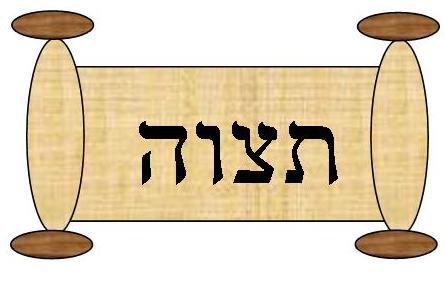The Torah tells us that the Altar upon which burnt offerings were brought was made of wood that was covered with a thin layer of copper. It is therefore referred to as “the copper Altar” and “the Altar of burnt offerings.” The Midrash states, “Moshe said before G’d, ‘Master of the Universe, You had commanded me to make an Altar from Achacia wood and cover it with copper. You also told me that there will be a continuous fire that burns upon it. Will the fire not melt away the copper and burn the wood that is beneath it?’ G’d responded to Moshe, ‘The fact that fire burns through copper and consumes wood is a phenomenon that exists within the physical realm. However, in the spiritual realm these laws do not apply. Gaze upon the angels. They are composed of a consuming fire. In addition, in the spiritual realm there are great amounts of ice, yet the fire of the angels does not melt it. Fire and ice coexist without interfering with one another.”
Rabbi Yosek Kalatsky comments: The Midrash tells us that at Sinai every Jew stood in a physical state of perfection. Whoever had been previously blind was able to see. If one were crippled, he was able to stand. Those who were deaf were able to hear. This is because the Divine Presence had come upon Sinai. Since G’d is the source of all life and everything that is perfect, anything that is within His proximity is infused with a life force and thus assumes a state of perfection. There is no deficiency within the life force that one receives directly from G’d. Thus, anything that is exposed to His Presence assumes a perfected state. However, after the sin of the Golden Calf the Divine Presence distanced Itself from the Jewish people. Those who had been previously handicapped reverted back to their imperfect state. Moshe had understood that the Mishkan was a semblance of Sinai but was not an exact replication of Sinai. Since the Jewish people themselves were no longer qualified to contain the Divine Presence, directly within their midst, it was only through the medium of the Mishkan that they were able to have a relationship with G’d. Moshe believed that the Mishkan no longer represented the spiritual realm. Thus, it was subject to physical phenomena. Ramban explains that every aspect of the Mishkan reflected and symbolized the setting of Sinai. Thus, the Mishkan was the equivalent of Sinai in accommodating G’d’s Presence. Moshe, therefore needed to be informed that despite the spiritual regression of the Jewish people, as a result of the sin of the Golden Calf, the Mishkan itself was an exact spiritual replication of the Sinai setting.
Chazal tell us that before Adam had sinned by eating from the Tree of Knowledge all trees were fruit bearing. It was only after the sin that non-fruit bearing trees came into being. After the sin of Adam, the world became tainted and thus G’d distanced Himself to a degree from the physicality of existence. Consequently, some trees no longer bore fruit because they were no longer attached to the source of life. Thus, they existed in a deficient state. At the end of time, when G’d will return and permeate all existence, all trees will once again produce fruit.
Prepared by Devorah Abenhaim







